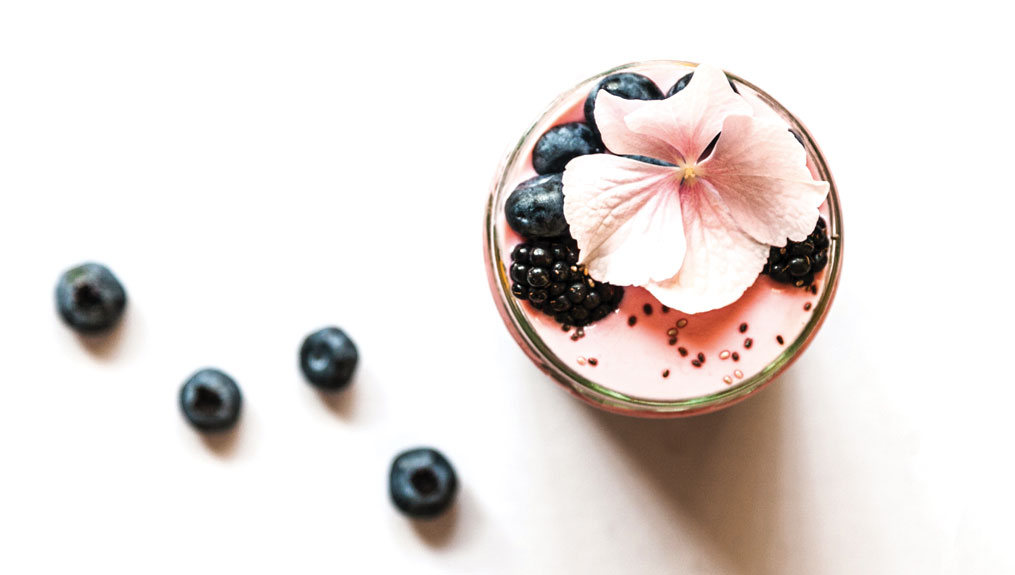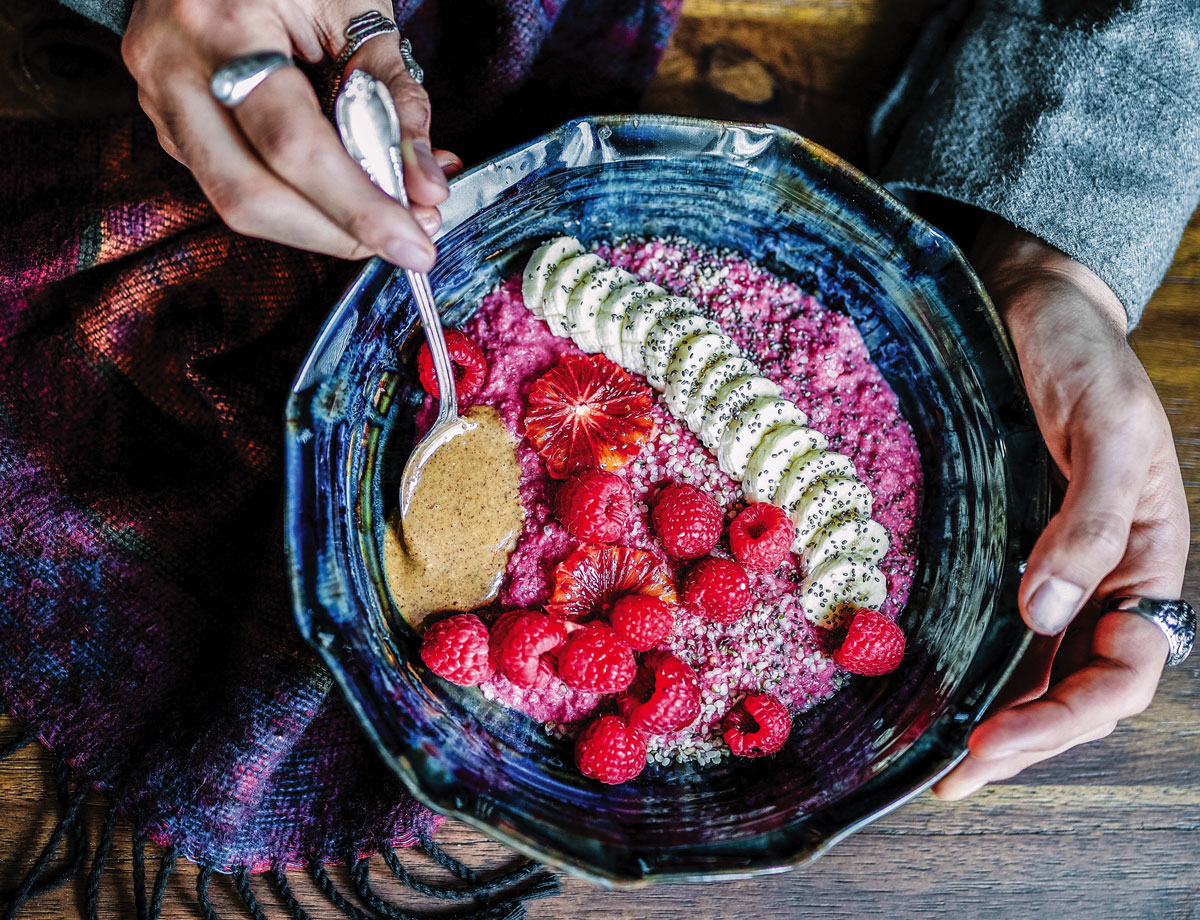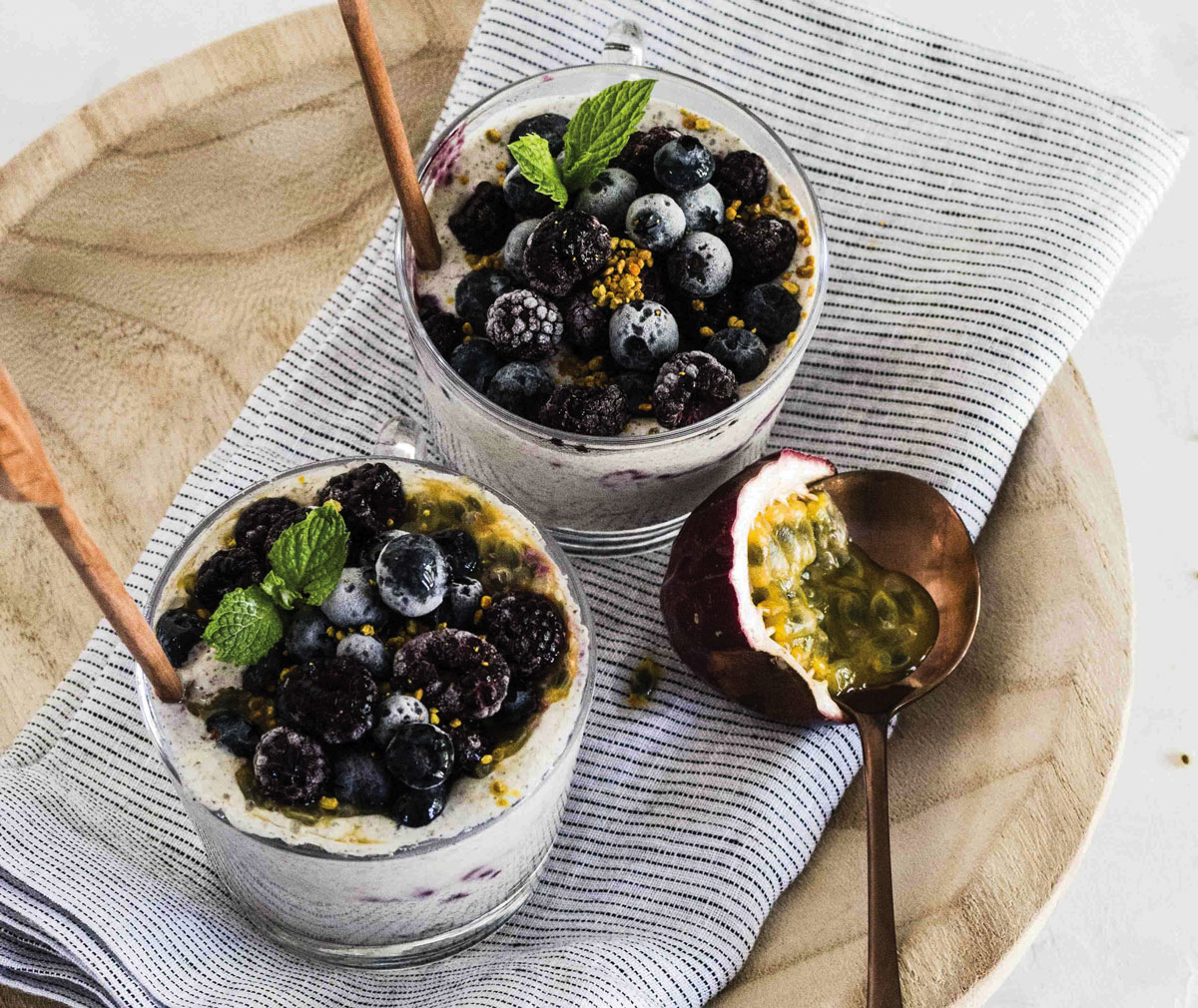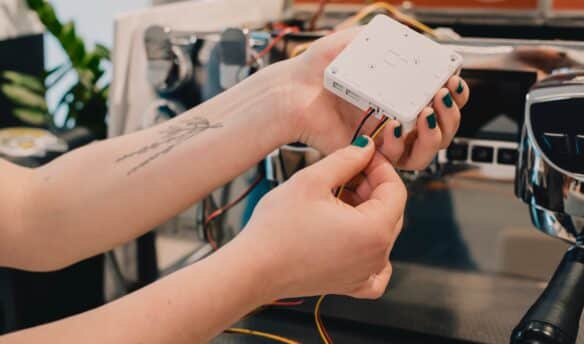Sometimes, a coffee or tea shop wants a way to expand beyond beverages and offer nourishing and appealing food options for today’s busy customers.
Smoothies and smoothie bowls can be a simple way to extend your menu’s food and beverage options. The varied colors of foods like bananas and berries and the textures of ingredients like nuts and granola can appeal to a broad audience: from folks looking for a quick meal option to those that love visually appealing food.
Smoothies offer portability for those on the go, while smoothie bowls, which might contain more ingredients, appeal to those who want something slightly more elevated that they can’t recreate at home.
“With smoothies, it’s harder [for customers] to justify a high expense because they think they can recreate it at home,” says Ryan Carpenter, founder of the Portland, Oregon-based açaí bowl and smoothie shop Moberi. “Recreating a bowl at home and sourcing the high-end ingredients is difficult.”
Smoothies and smoothie bowls can provide a natural, healthful extension for the food and beverage sides of the menu. The varied colors of super foods and textures of different ingredients that go into making smoothies and smoothie bowls appeals to the Instagram crowd.
Smoothies offer portability for those who can’t easily eat on the go, while smoothie bowls appeal to those who want something they can’t prepare as easily at home.
“With smoothies, it’s harder [for customers] to justify a high expense because they think they can recreate it at home,” says Ryan Carpenter, founder of the Portland, Oregon-based açaí bowl and smoothie shop Moberi. “Recreating a bowl at home and sourcing the high-end ingredients is difficult.”
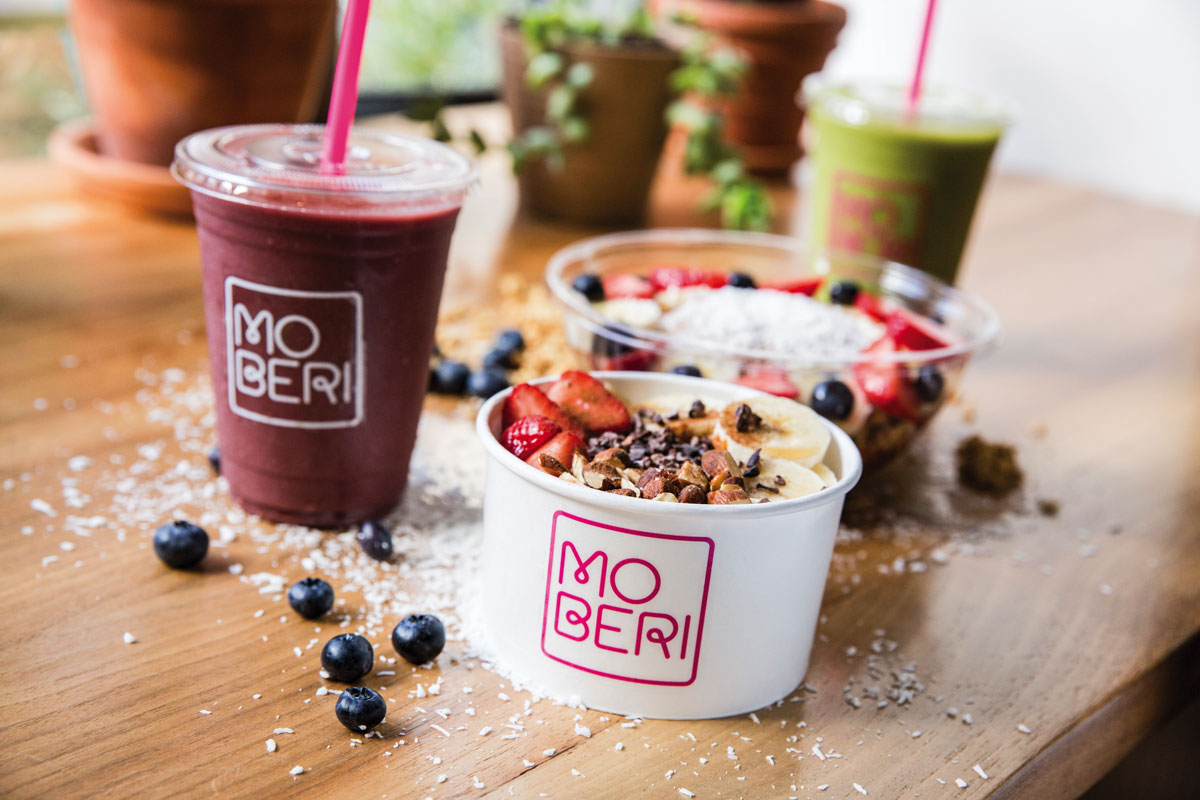
But while it may seem easy to throw fruit in a blender, operators must carefully plan their smoothie and bowl menus. We talked to several smoothie experts about how to get started.
Define Your Demographics
Smoothies and smoothie bowls can appeal to different customers, so first, figure out what would make your customers order a smoothie or bowl. Ask yourself a few questions:
• Are they seeking a sweet treat?
• Do consumers come in looking to refuel protein post-workout?
• Do patrons seek out dairy-free or soy-free snacks?
• Is portability important?
Carpenter says his shop appeals to “a plant-based lifestyle audience.” The term “plant-based” has recently gained traction instead of vegan in an attempt to shed some of the negative connotations of veganism. But he didn’t always know what his customer base would look like.
In 2011, when Moberi first opened with a custom bike-powered blender in front, Carpenter thought his customers would be families drawn to the interactive element of the bike. “It took a couple of years to figure out that the bread-and-butter would be people who come in daily,” Carpenter says. “People are more interested in our high-end products [than the novelty of the bike].” He says the photogenic açaí bowls took off on social media and bowls now make up about 80 percent of products sold.
Dan McCormick, the founder of Bowl of Heaven, which opened in Southern California seven years ago, says the time of day dictates who’s ordering from his shops. “In the morning, it’s people coming out of yoga and Pilates class,” he says. “At lunch, we might get our business crowd or school kids. In the two to three o’clock timeframe, kids are out of school and into their athletic events. The fun part is we get to feed kids something good for them.”
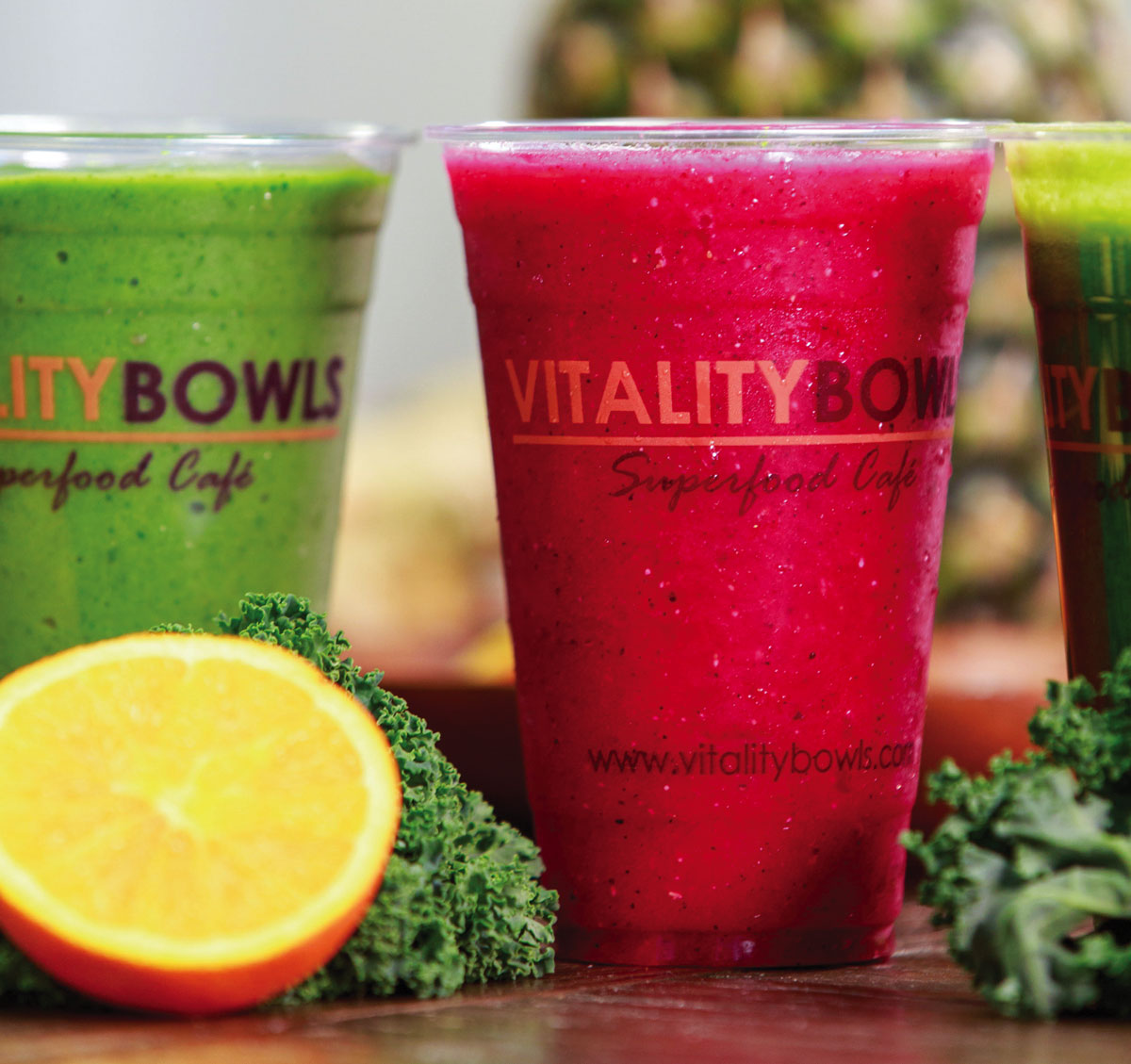
Uriah Blum, vice president of operations at Vitality Bowls, which opened its first location in Northern California in 2011, says Vitality Bowls also appeals to high school students. “The food’s so beautiful; the young kids have helped blow it up on social media with pictures,” Blum says. “We get the pre- and post-workout gym people coming in, people with dietary restrictions and allergies.”
Consider the (Produce) Source
Once you know who’s likely to order your smoothies and bowls, you can start developing your menu. Blum says Vitality Bowls develops its recipes through “a lot of thought and trial-and-error and tweaking.”
What started with just four smoothies has since grown into an expansive menu. When they want to add menu items, they’ll typically test it as a special of the month and then add it as a regular menu item if it proves popular.
For instance, detox and green bowls began as monthly specials and are now regular menu items. McCormick says Bowl of Heaven typically has regular items with a few seasonal items rotated in, such as a pumpkin bowl in the fall or a tropical bowl in the summer. As you develop your smoothie and bowl offerings, seasonality and ability to source produce should be key considerations.
“Obviously, fruits and vegetables have their seasonality,” McCormick says. “Pomegranates are fresher in the winter, and raspberries are super expensive in the winter, so you have to be conscious of that.”
“Superfoods”—antioxidant-rich fruits such as papaya and açaí—are popular in smoothies and bowls, but sourcing them year-round isn’t always easy or cheap. “It’s always one of our challenges as we want to bring in these superfoods,” Blum says.
Specialty smoothie shops order larger quantities of these superfoods through different vendor relationships, but for coffeehouses and teashops, which produce a smaller volume of smoothies, less exotic ingredients like bananas and berries may make more financial sense.
Dare to Be Different
A recent trend on Instagram and elsewhere was cauliflower smoothies, but try to resist the rush to jump on the bandwagon of every new fad.
“We’ll wait until something has been proven in the market before we commit to carrying some more outlandish superfoods,” Carpenter says. “We’ve done many adventurous things over the years, but a smoothie with peanut butter and chocolate is still our most popular.” Sometimes, your customers will tell you what to add to your menu. At Moberi, customers prompted Carpenter to offer more smoothies made with almond butter.
McCormick says a key smoothie trend is greens like kale, arugula, and spinach. “If you make it green and it tastes good, you’ll have a winner,” he says. “You can offset the bitterness with citrus or sweetness or both.”
McCormick recommends mixing mango, pineapple, or banana with greens. “It helps the green color come through,” he adds. “If you mix with strawberries or blueberries, you’ll have a brown smoothie that looks gross, so stick with those more neutral-colored fruits.”
Waste Not, Want Not
Many consumers prefer smoothies and bowls made with fresh produce. But fresh produce is highly perishable. If you overestimate how much you’ll need, it can cost you. Forecasting and only ordering what you need is critical.
For instance, Vitality Bowls gets fresh produce delivered at least three times weekly. Frozen produce is also your friend when it comes to minimizing food waste. “Frozen produce is great,” Carpenter says. “It’s shelf stable in a freezer and has a higher nutritional content because the fruits are picked at the peak of ripeness, as opposed to fresh fruits that ripen in transit. Fresh strawberries are great, but frozen strawberries are better for blending up a fresh base [for bowls].”
Moberi’s bowls are topped with fresh produce. To optimize workflow and minimize waste, Blum says Vitality Bowls tries “to utilize similar ingredients, so we already have them prepped and available in the same place.”
If you wind up with excess produce, try to use it or freeze it before it goes bad. McCormick offers another solution: “Whatever extras we have, we like to sample to our existing customer base,” he says. Free samples can help engender goodwill with customers and prompt repeat visits.
Adding smoothies and bowls to your menu might be more than you can digest right now, but as Carpenter says, “Keeping it simple would be my best recommendation. You don’t have to get as crazy as you’d think. People want something pretty simple, and they want it to be good for them.”
This article was originally published on August 14, 2018 and has been updated to meet Fresh Cup’s current editorial standards.

